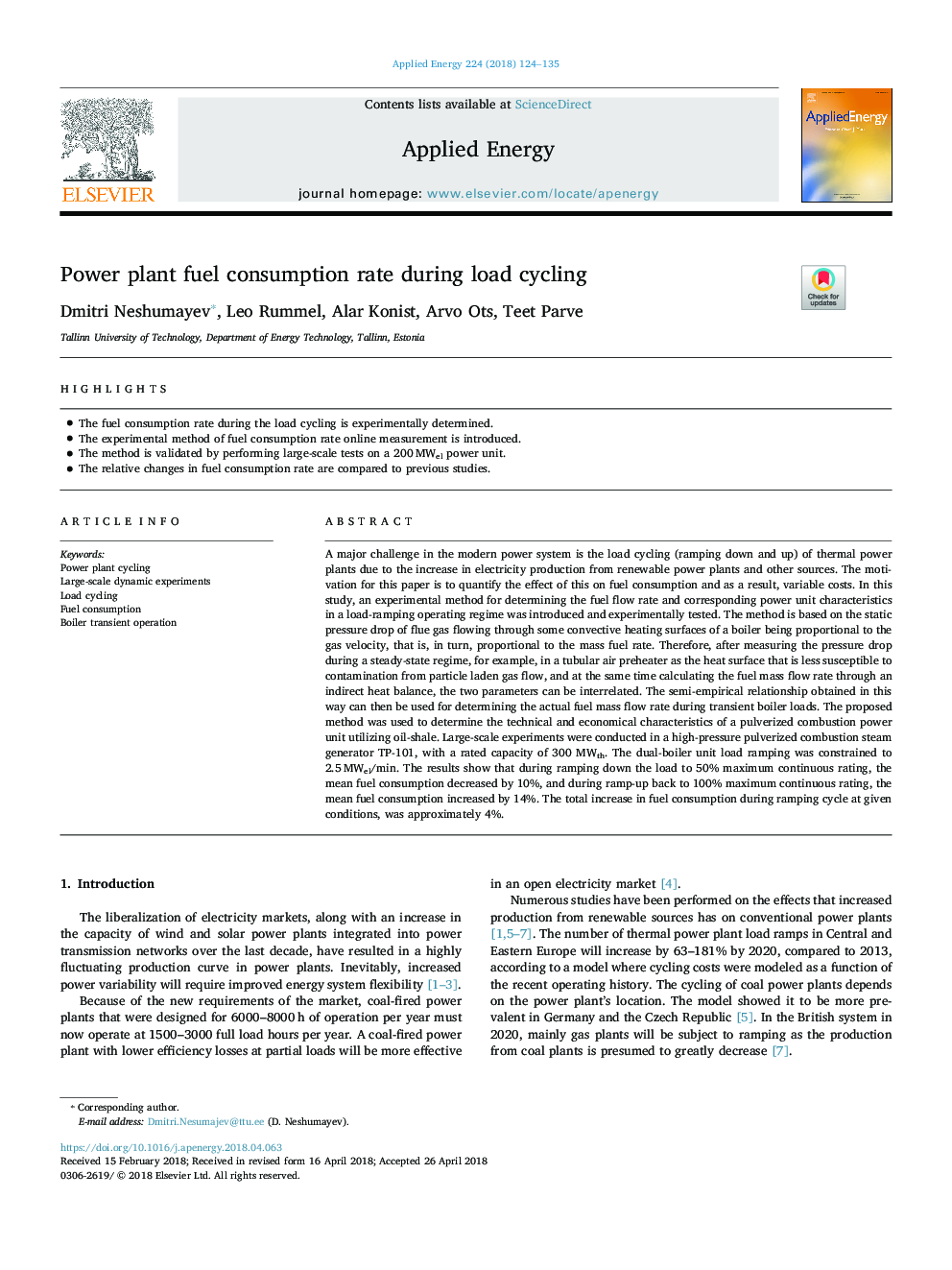| کد مقاله | کد نشریه | سال انتشار | مقاله انگلیسی | نسخه تمام متن |
|---|---|---|---|---|
| 6679921 | 1428066 | 2018 | 12 صفحه PDF | دانلود رایگان |
عنوان انگلیسی مقاله ISI
Power plant fuel consumption rate during load cycling
ترجمه فارسی عنوان
میزان سوخت مصرف سوخت در طول دوچرخه سواری بار
دانلود مقاله + سفارش ترجمه
دانلود مقاله ISI انگلیسی
رایگان برای ایرانیان
کلمات کلیدی
نیروگاه دوچرخه سواری، آزمایشات پویا در مقیاس بزرگ، بار دوچرخه سواری، مصرف سوخت، عملیات گذار بویلر،
موضوعات مرتبط
مهندسی و علوم پایه
مهندسی انرژی
مهندسی انرژی و فناوری های برق
چکیده انگلیسی
A major challenge in the modern power system is the load cycling (ramping down and up) of thermal power plants due to the increase in electricity production from renewable power plants and other sources. The motivation for this paper is to quantify the effect of this on fuel consumption and as a result, variable costs. In this study, an experimental method for determining the fuel flow rate and corresponding power unit characteristics in a load-ramping operating regime was introduced and experimentally tested. The method is based on the static pressure drop of flue gas flowing through some convective heating surfaces of a boiler being proportional to the gas velocity, that is, in turn, proportional to the mass fuel rate. Therefore, after measuring the pressure drop during a steady-state regime, for example, in a tubular air preheater as the heat surface that is less susceptible to contamination from particle laden gas flow, and at the same time calculating the fuel mass flow rate through an indirect heat balance, the two parameters can be interrelated. The semi-empirical relationship obtained in this way can then be used for determining the actual fuel mass flow rate during transient boiler loads. The proposed method was used to determine the technical and economical characteristics of a pulverized combustion power unit utilizing oil-shale. Large-scale experiments were conducted in a high-pressure pulverized combustion steam generator TP-101, with a rated capacity of 300 MWth. The dual-boiler unit load ramping was constrained to 2.5â¯MWel/min. The results show that during ramping down the load to 50% maximum continuous rating, the mean fuel consumption decreased by 10%, and during ramp-up back to 100% maximum continuous rating, the mean fuel consumption increased by 14%. The total increase in fuel consumption during ramping cycle at given conditions, was approximately 4%.
ناشر
Database: Elsevier - ScienceDirect (ساینس دایرکت)
Journal: Applied Energy - Volume 224, 15 August 2018, Pages 124-135
Journal: Applied Energy - Volume 224, 15 August 2018, Pages 124-135
نویسندگان
Dmitri Neshumayev, Leo Rummel, Alar Konist, Arvo Ots, Teet Parve,
